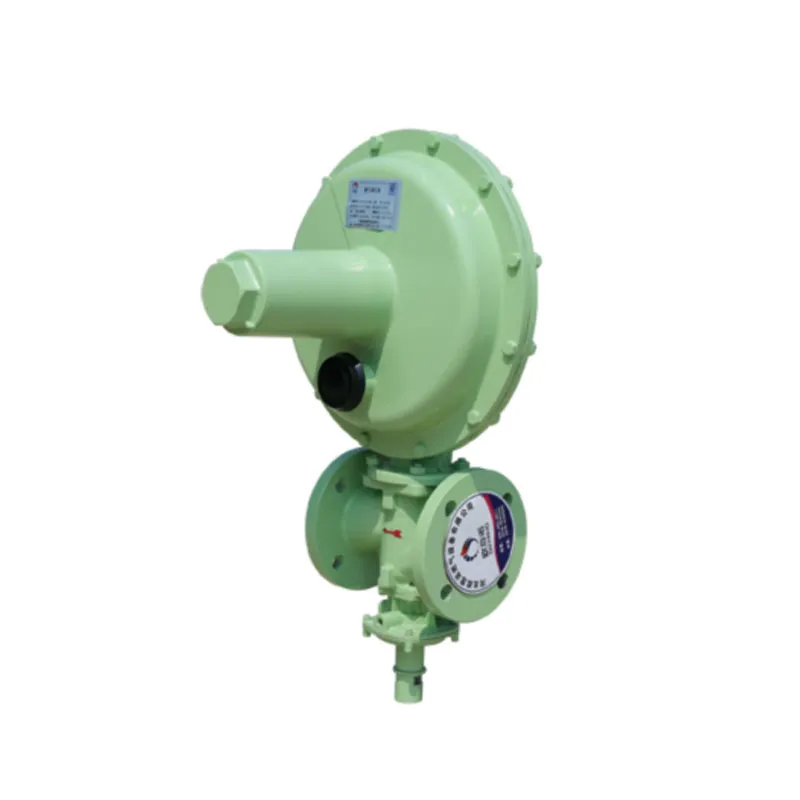
Dec . 03, 2024 15:52
Back to list
مخفض ضغط الغاز الطبيعي
The Role of Natural Gas Pressure Regulators in Energy Systems
Natural gas has become an essential component of energy systems around the world, serving as a vital fuel for heating, electricity generation, and as a feedstock for various industrial processes. However, transporting and utilizing natural gas requires managing its pressure effectively to ensure safety and efficiency. This is where natural gas pressure regulators come into play. These devices are crucial in the distribution and end-use of natural gas, functioning to maintain appropriate pressure levels in gas delivery systems.
Understanding Natural Gas Pressure Regulation
Natural gas is typically transported through pipelines under high pressure. When this high-pressure gas reaches various stages of the distribution system, reducing its pressure to safe, usable levels becomes necessary. Pressure regulators are engineered specifically for this task. They control the pressure of the gas by reducing and stabilizing the pressure of the gas flowing into a pipeline or gas appliance.
The critical function of a pressure regulator is to provide a steady output pressure despite variations in inlet pressure and flow demand. By maintaining this consistency, regulators help to ensure that appliances operate efficiently and safely, preventing dangerous gas leaks or blowouts caused by excessive pressure.
Types of Natural Gas Pressure Regulators
1. First-Stage Regulators These are typically installed directly after the gas line enters a facility or gas distribution network. Their primary function is to reduce the high pressure of the incoming gas to an intermediate pressure level suitable for further distribution.
2. Second-Stage Regulators Positioned downstream from first-stage regulators, these devices further reduce the gas pressure to the final delivery pressure required for residential or commercial use.
3. Lock-up Pressure Regulators These regulators are designed to shut off the flow of gas if the pressure exceeds a predetermined level, providing an additional layer of safety.
.
5. Electronic Pressure Regulators These modern devices utilize sensors and actuators to regulate pressure electronically, allowing for precise control and monitoring, often integrated into smart home or industrial applications.
مخفض ضغط الغاز الطبيعي

Key Benefits of Natural Gas Pressure Regulators
Natural gas pressure regulators provide numerous benefits that underline their importance in energy systems
- Safety By controlling and reducing gas pressure, these regulators minimize the risk of accidents related to overpressure, including explosions or leaks.
- Efficiency Proper pressure regulation ensures that appliances receive the optimal gas flow, enhancing their performance and prolonging their lifespan.
- Cost-Effectiveness Efficient gas use reduces wastage, leading to cost savings for both consumers and suppliers. This efficiency is particularly important as energy prices continue to fluctuate.
- Reliability With consistent pressure regulation, users can expect reliable performance from their gas-dependent appliances, whether in residential, commercial, or industrial settings.
The Future of Natural Gas Pressure Regulation
As the energy landscape evolves and the demand for natural gas increases, advancements in pressure regulation technology are anticipated. Innovations such as IoT-enabled regulators, which allow for real-time monitoring and predictive maintenance, are already on the horizon. This could enhance the safety and efficiency of gas distribution networks significantly.
Moreover, with the rise of renewable energy sources and a focus on reducing carbon footprints, natural gas pressure regulators will continue to play an essential role in bridging the gap between traditional energy systems and cleaner alternatives. They will ensure that natural gas remains a reliable and safe energy source during this transitional phase.
Conclusion
Natural gas pressure regulators are a critical component of the natural gas supply chain, enabling safe and efficient gas distribution for diverse applications. With continued technological advancements and a growing emphasis on safety and efficiency, these devices will remain indispensable in the energy industry, ensuring that natural gas can be utilized effectively to meet the world’s energy needs. In an age where energy reliability and sustainability are paramount, understanding and investing in effective pressure regulation technologies will be essential for future energy systems.
Latest news
-
Safety Valve Spring-Loaded Design Overpressure ProtectionNewsJul.25,2025
-
Precision Voltage Regulator AC5 Accuracy Grade PerformanceNewsJul.25,2025
-
Natural Gas Pressure Regulating Skid Industrial Pipeline ApplicationsNewsJul.25,2025
-
Natural Gas Filter Stainless Steel Mesh Element DesignNewsJul.25,2025
-
Gas Pressure Regulator Valve Direct-Acting Spring-Loaded DesignNewsJul.25,2025
-
Decompression Equipment Multi-Stage Heat Exchange System DesignNewsJul.25,2025

